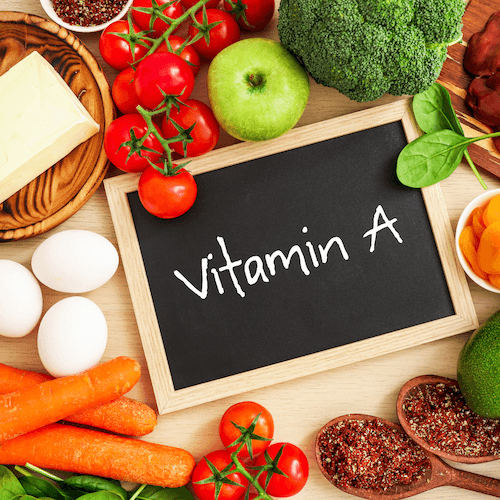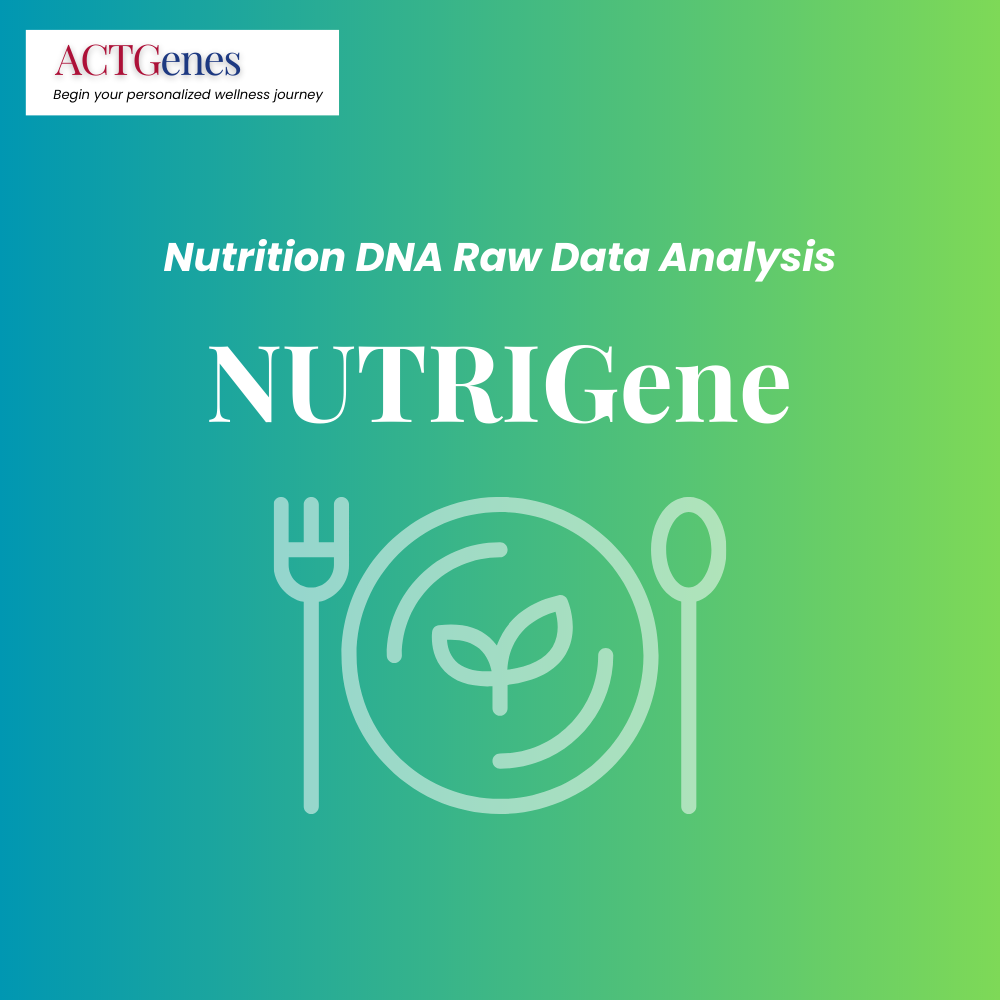The Interplay of Genes and Vitamin A (Retinol): A Comprehensive Overview

Vitamin A is a vital nutrient, pivotal to the body’s growth, maintenance, and overall well-being.
As a fat-soluble vitamin, it is stored within our liver and obtained from external sources in two variants – Retinol and Carotenoids.
Retinol, a form of Vitamin A, is sourced from animal-based foods such as meat, fish, poultry, and dairy products.
Carotenoids, on the other hand, are vibrant pigments present in a variety of fruits and vegetables.
There are over 500 types of carotenoids found in common food sources, all of which can be converted into bioactive forms of Vitamin A.
Functions and Benefits of Vitamin A
Vitamin A is a multitasker. It aids in enhancing vision, fortifying immunity, and maintaining healthy skin and teeth.
It safeguards our skeletal system and soft tissues and plays an integral role in metabolic processes.
Vitamin A is particularly beneficial for pregnant women as it aids in tissue repair post-delivery and reduces the risk of infections.
Historical and Evolutionary Perspectives: The Necessity of Vitamin A
The existence and impact of vitamin A on human health took around 130 years to be established by researchers.
Early documentation of Vitamin A deficiency (VAD) involved instances of night blindness in children, soldiers, and sailors.
The go-to remedy at the time was the consumption of cod liver oil or an abundance of cooked liver, despite the lack of understanding as to why this worked.
The late 19th and early 20th centuries witnessed numerous studies exploring the effects of nutritional deprivation on animals and humans.
In 1912, Sir Frederick Gowland Hopkins made a breakthrough discovery.
He deduced that milk contained an additional factor, other than carbohydrates, fats, and proteins, that enabled rats to survive solely on a dairy-based diet.
His work was later awarded the Nobel Prize.
This additional factor was eventually identified as a fat-soluble nutrient in 1918 and finally recognized as Vitamin A in 1920.
Fast forward to 1931, the first International Conference on Vitamin Standards was held in London, which established standards and recommended values for all recognized vitamins, including Vitamin A.
Despite increased nutritional awareness worldwide, WHO states that around 250 million preschool children are diagnosed with VAD.
Modifying dietary habits, understanding one’s genetic influence on Vitamin A requirements, and supplementing with Vitamin A, if necessary, can mitigate the risk of VAD.
Molecular Mechanisms: A Technical Insight
Humans cannot synthesize Vitamin A internally, making it an essential vitamin that must be acquired from diet or supplements. Vitamin A is derived from both plant and animal sources.
Vitamin A from animal sources is provided in its active form, retinol.
Plant sources provide Vitamin A in the form of carotene, an inactive form, which must then be converted into the active form, retinol.
Certain individuals, due to their genetic makeup, exhibit less efficient conversion of biologically inactive carotene to active retinol.
They are typically advised to consume animal sources of Vitamin A, take Vitamin A supplements, or ingest higher amounts of plant sources to compensate for their diminished conversion efficiency.
The Influence of Genes
Later sections will delve deeper into the specific genes that contribute to this predisposition.
Factoid: Most of us are aware that carrots, being rich in Vitamin A, aid in improving eyesight. But where did this belief originate?
During World War II, to obstruct German bombers from identifying their targets, the British government implemented citywide blackouts.
Concurrently, the British were concealing an Intercept Radar System that enhanced their pilots’ visibility despite blackouts.
To maintain this secret, the British Ministry propagated the idea that their pilots could see better in the dark due to excessive carrot consumption, a belief that continues to prevail.
Recommended Daily Intake, Effects of Overconsumption or Deficiency of Vitamin A
The U.S. Department of Health & Human Services recommends specific values of Vitamin A intake at various life stages.

Overconsumption of Vitamin A may lead to side effects such as nausea, headaches, dizziness, joint and bone pain, and potentially irreversible liver damage. Severe vitamin A toxicity can even induce coma and death.
On the other hand, consistent Vitamin A deficiency could increase the risk of developing conditions such as xerophthalmia, night blindness, anemia, diarrhea in infants, infections, dry skin and eyes, fertility issues, and acne breakouts.
Non-Genetic and Genetic Factors Affecting Vitamin A Levels
Non-genetic factors affecting Vitamin A levels include insufficient dietary intake, chronic diarrhea, respiratory infections, and avoidance of animal sources of Vitamin A, particularly in vegans.
Infants with mothers exhibiting signs of VAD are also at a higher risk of developing related health complications.
Genetic Factors Influencing Vitamin A Levels
Alterations in both the TTR and RBP4 genes can lead to decreased levels of retinol within the body. The protein transthyretin, manufactured by the TTR gene, facilitates the internal transport of vitamin A.
The RBP4 gene, which stands for Retinol Binding Protein 4, generates the RBP4 transport protein that is responsible for the delivery of vitamin A from the liver to the surrounding tissues.
Transthyretin collaborates with RBP in plasma, acting as a safeguard to prevent the kidneys from eliminating excess vitamin A.
There exist two gene variations that can contribute to Vitamin A Deficiency (VAD).
The BCMO1 gene has a significant role, encoding enzymes that transform the carotenes found in plant-based foods into usable forms for the human body.
The CYP26B1 gene is crucial in reducing the active variant of vitamin A, known as retinoic acid. The SNP rs2241057 with its G variant present within this gene can cause a heightened breakdown of retinoic acid, subsequently leading to reduced vitamin A levels in the body.
Check your DNA raw data for the BCMO1 and CYP26B1 gene variants
Recommendations for Optimum Vitamin A Levels
To maintain adequate levels of Vitamin A, it is essential to diversify dietary choices, undergo genetic testing to determine if you require more Vitamin A-rich foods, consider supplements if diagnosed with VAD, choose Vitamin A-fortified foods, and utilize gentle cooking methods to retain Vitamin A in foods.
Conclusion
Vitamin A is a key fat-soluble vitamin crucial to the body’s healthy functioning.
Both excessive consumption and deficiency can lead to health complications and undesirable side effects.
Due to genetic variations, some individuals may require more Vitamin A-rich foods than others, which can be compensated for with supplements and fortified foods.
A balanced diet with dairy products, meat sources, fruits, and vegetables can easily provide the recommended dose of Vitamin A.
Healthy, varied food choices and gentle cooking methods ensure that your daily Vitamin A needs are met.
Written By
Share this article













